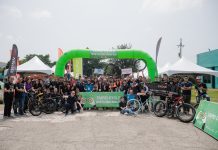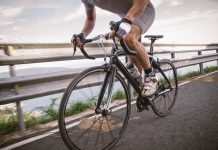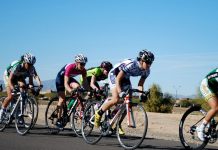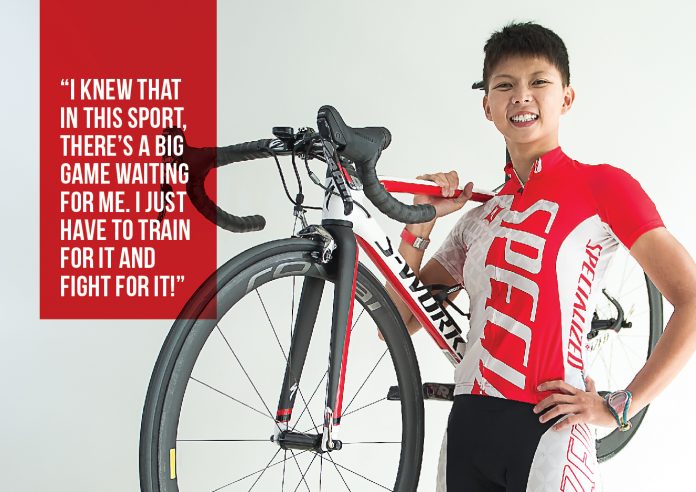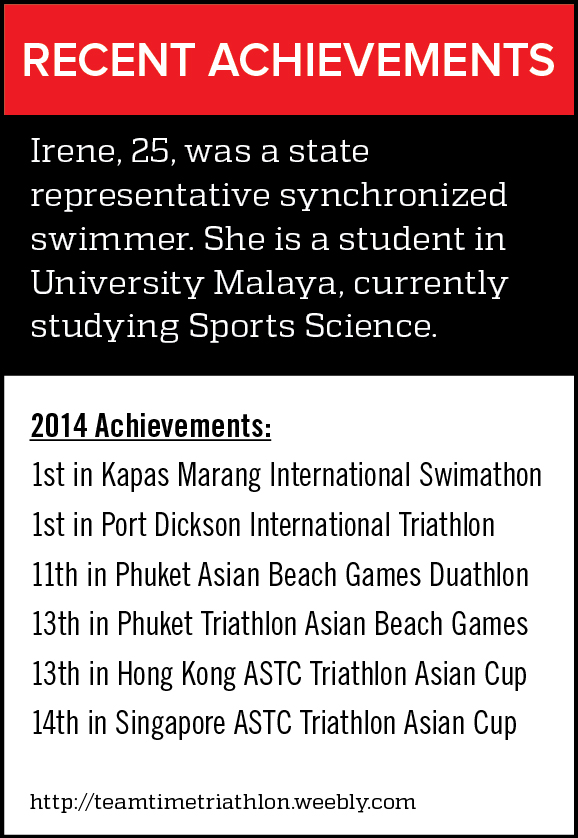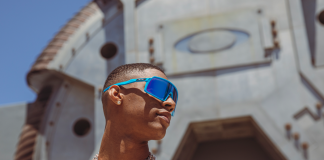The kindergartner Irene Chong erased the word ‘fear’ from her growing vocabulary. Still fumbling with her words at 5, she began breeding strength and discipline underwater, from blowing bubbles to tri-ing professionally, twenty years after.
Breaking down what happened in between, Irene Chong faces questions about her story of swimming, cycling and running.
Let’s begin with your childhood. How active are you since young?
I find my way into sports through swimming when I was 5. It’s a lifelong love affair really, not to mention I’m the only one among 4 of my siblings who’s into sports. At 7, I had my first swimming competition, then dove right into synchronized swimming at 13. Two years after, I got into the national team. It was fun and different. You swim and dance inside the water. We make it look easy by smiling, but we’re all suffering. [laughs]
Having quite a history with the swimming world, what made you tri?
It was my national swimmer friend, who was going for triathlon races, who piqued my interest for the sport. I saw her cycling in Putrajaya. One training-free Saturday, I joined her for the fun. You can swim, bike and run, why don’t you tri? She asked. It was the question that changed the way I see the game.
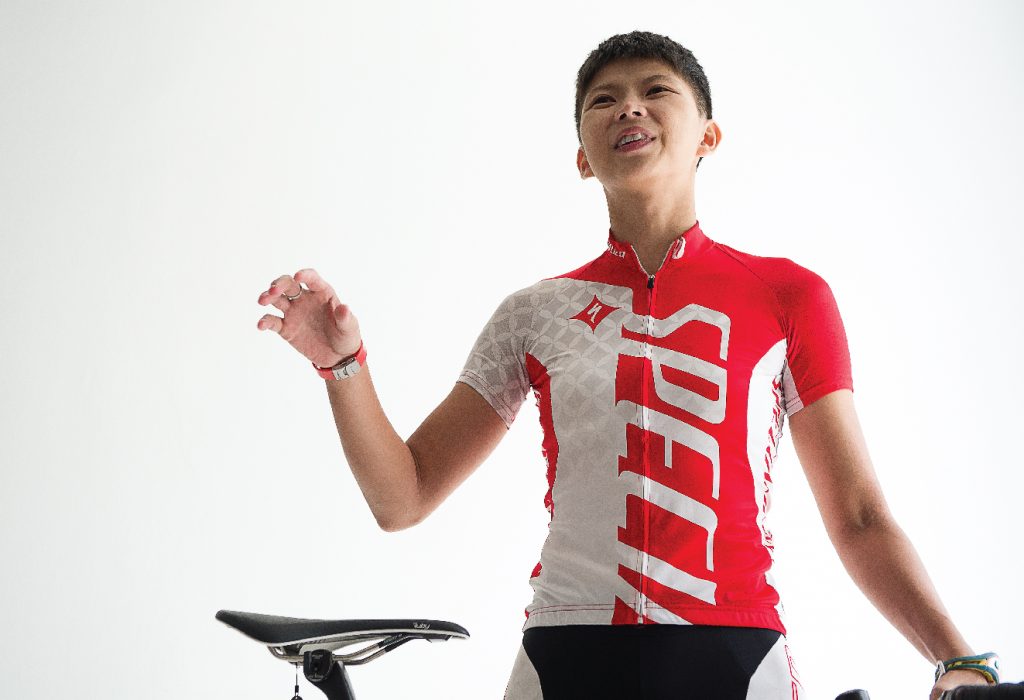
How was your first triathlon race like?
I went for A ‘Famosa Tri in 2007 for my first triathlon race as a relay swimmer. I finished it and it felt totally different from synchronized swimming—an entirely new challenge! This was followed by more races in the sprint category without a coach to guide me through, not to mention not having a bicycle of my own—I would always borrow from others until I got my first bike for a birthday present. Sprint-distance races went on for two years, but after awhile, people wouldn’t look at me as a beginner anymore, “You should move forward.” And I did. I moved on to the Olympic distance. In my head, I would push myself, Just double the sprint distance. I can do it, I can do it!
What were the pitfalls you faced as a result of training without a coach?
When I raced my first Olympic distance at PD International Triathlon, I really suffered, and this was not the first time. Every time I would go for the race, I would suffer. No one guided me through training. I had to do it alone by trial and error. It was tough knowing that you can’t swim, bike or run too much. I was my own student, telling myself, I should run like this, bike like that. I was on my own for a few years, and I was not seeing myself improving, so I stopped for a good two years.
How did you keep yourself occupied during the two-year break? What made you come back?
I was cycling in Johor. I joined the Johor cycling team and, one fine day, I got a message from the national association that there’s a time trial. I went ahead despite knowing that I didn’t stand a chance at all. As if luck was on my side that fateful day, I met the coach who got me into Team Time. Lo and behold, I was back on the scene.

















